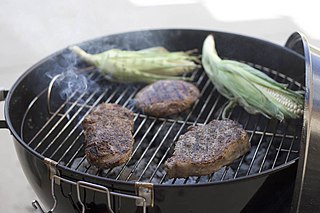The following highways are numbered 498:
Exploring the Convenience and Versatility of Silicone Pipes with Lids
In the realm of smoking accessories, innovation is constantly reshaping the landscape, offering enthusiasts new ways to enjoy their favorite pastime. Among these innovations, silicone pipes with lids have emerged as a versatile and convenient option for smokers of all preferences. Combining the durability of silicone with the functionality of a lid, these pipes offer a unique blend of portability, discretion, and ease of use.
Silicone pipes have gained popularity in recent years due to their unbreakable nature and easy maintenance. Unlike traditional glass pipes, which can be fragile and prone to breakage, silicone pipes are incredibly durable, making them ideal for on-the-go use or outdoor activities. Additionally, silicone is non-stick and heat-resistant, ensuring a smooth smoking experience without the hassle of residue buildup or tedious cleaning routines.
One of the standout features of silicone pipes with lids is their portability. The addition of a lid allows users to pack their pipe with tobacco or herbs and seal it shut, making it easy to transport without worrying about spills or odors. Whether you're heading out for a hike, attending a festival, or simply on the move, a silicone pipe with a lid offers peace of mind and convenience.
Furthermore, the lid serves a dual purpose by providing discretion and odor control. When the lid is closed, it creates a barrier that helps contain any lingering smells, making silicone pipes with lids an excellent choice for users who value privacy or need to smoke discreetly. This feature also makes them ideal for storing pre-packed bowls for later use, keeping your smoking materials fresh and secure until you're ready to indulge.
In addition to their practical benefits, silicone pipes with lids come in a variety of designs and colors, allowing users to express their personal style. Whether you prefer a sleek and minimalist aesthetic or a bold and vibrant look, there's a silicone pipe with a lid to suit every taste. Some models even feature innovative designs, such as collapsible or foldable pipes, further enhancing their portability and convenience.
For those concerned about environmental impact, silicone pipes offer a sustainable alternative to traditional glass or metal pipes. Silicone is a recyclable material, and many manufacturers use eco-friendly production methods, making silicone pipes with lids a responsible choice for environmentally conscious consumers.
In conclusion, silicone pipes with lids represent a modern and practical solution for smokers looking for convenience, durability, and versatility. Whether you're a seasoned enthusiast or a casual user, investing in a silicone pipe with a lid can enhance your smoking experience and simplify your on-the-go lifestyle. With their combination of functionality, portability, and style, these innovative pipes are sure to become a staple accessory for smokers everywhere.
| Preceded by 497 | Lists of highways 498 | Succeeded by 499 |

A tobacco pipe, often called simply a pipe, is a device specifically made to smoke tobacco. It comprises a chamber for the tobacco from which a thin hollow stem (shank) emerges, ending in a mouthpiece. Pipes can range from very simple machine-made briar models to highly prized hand-made artisanal implements made by renowned pipemakers, which are often very expensive collector's items. Pipe smoking is the oldest known traditional form of tobacco smoking.

A bong is a filtration device generally used for smoking cannabis, tobacco, or other herbal substances. In the bong shown in the photo, the smoke flows from the lower port on the left to the upper port on the right.

A cigar is a tobacco product made to be smoked. Cigars are produced in a variety of shapes and sizes. Since the 20th century, almost all cigars are made of three distinct components: the filler, the binder leaf which holds the filler together, and a wrapper leaf, for appearance and flavor, which is often the highest quality leaf used. Often there will be a cigar band printed with the cigar manufacturer's logo. Modern cigars can come with two or more, highlighting special qualities such as age and origin of the tobaccos used.

Smoking is the process of flavoring, browning, cooking, or preserving food by exposing it to smoke from burning or smoldering material, most often wood. Meat, fish, and lapsang souchong tea are often smoked.

Tobacco smoking is the practice of burning tobacco and ingesting the resulting smoke. The smoke may be inhaled, as is done with cigarettes, or simply released from the mouth, as is generally done with pipes and cigars. The practice is believed to have begun as early as 5000–3000 BC in Mesoamerica and South America. Tobacco was introduced to Eurasia in the late 17th century by European colonists, where it followed common trade routes. The practice encountered criticism from its first import into the Western world onwards but embedded itself in certain strata of a number of societies before becoming widespread upon the introduction of automated cigarette-rolling apparatus.

A hookah, shisha, or waterpipe is a single- or multi-stemmed instrument for heating or vaporizing and then smoking either tobacco, flavored tobacco, or sometimes cannabis, hashish and opium. The smoke is passed through a water basin—often glass-based—before inhalation.

A barbecue grill or barbeque grill is a device that cooks food by applying heat from below. There are several varieties of grills, with most falling into one of three categories: gas-fueled, charcoal, or electric. There is debate over which method yields superior results.

Chewing tobacco is a type of smokeless tobacco product that is placed between the cheek and lower gum to draw out its flavor. It consists of coarsely chopped aged tobacco that is flavored and often sweetened; it is not ground fine like dipping tobacco. Unwanted juices are then spat.

World No Tobacco Day (WNTD) is observed around the world every year on 31 May. The annual observance informs the public on the dangers of using tobacco, the business practices of tobacco companies, what the World Health Organization (WHO) is doing to fight against the use of tobacco, and what people around the world can do to claim their right to health and healthy living and to protect future generations.

A chemical toilet collects human excreta in a holding tank and uses chemicals to minimize odors. They do not require a connection to a water supply and are used in a variety of situations. These toilets are usually, but not always, self-contained and movable. A chemical toilet is structured around a relatively small tank, which requires frequent emptying. It is not connected to a hole in the ground, nor to a septic tank, nor is it plumbed into a municipal system leading to a sewage treatment plant. When the tank is emptied, the contents are usually pumped into a sanitary sewer or directly to a treatment plant.

An exhaust system is used to guide reaction exhaust gases away from a controlled combustion inside an engine or stove. The entire system conveys burnt gases from the engine and includes one or more exhaust pipes. Depending on the overall system design, the exhaust gas may flow through one or more of:

Pipe smoking is the practice of tasting the smoke produced by burning a substance, most commonly tobacco or cannabis, in a pipe. It is the oldest traditional form of smoking.
A gravity bong, also known as a GB, bucket bong, grav, geeb, gibby, yoin, or ghetto bong, is a method of consuming smokable substances such as cannabis. The term describes both a bucket bong and a waterfall bong, since both use air pressure and water to draw smoke. A lung uses similar equipment but instead of water draws the smoke by removing a compacted plastic bag or similar from the chamber.

Pipe Mania is a puzzle video game developed by The Assembly Line for the Amiga and published in 1989. It was ported to several other platforms by Lucasfilm Games as Pipe Dream; the company distributed the game in the US. The player must connect randomly appearing pieces of pipe on a grid to a given length within a limited time.
A dual-sport motorcycle is a type of street-legal motorcycle that is designed for both on and off-road use. The terms all-road, on/off-road, and dual-purpose are also used for this class of motorcycles. Dual-sports are equipped with street-legal equipment such as lights, speedometer, mirrors, horn, license plate mounting, and muffler and can, therefore, be registered and licensed.

Smoking is a practice in which a substance is combusted and the resulting smoke is typically inhaled to be tasted and absorbed into the bloodstream of a person. Most commonly, the substance used is the dried leaves of the tobacco plant, which have been rolled with a small rectangle of paper into an elongated cylinder called a cigarette. Other forms of smoking include the use of a smoking pipe or a bong.
Dokha is a tobacco product, consisting of dried and finely shredded tobacco flakes mixed with herbs and spices. It originated in Iran during the 16th century. Unlike hookah tobacco, dokha is not cured with molasses. Users smoke the tobacco blend in small quantities using a pipe called a midwakh. Because the midwakh pipe is used almost exclusively for smoking dokha, the terms are often used interchangeably.

Crack cocaine, commonly known simply as crack, and also known as rock, is a free base form of the stimulant cocaine that can be smoked. Crack offers a short, intense high to smokers. The Manual of Adolescent Substance Abuse Treatment calls it the most addictive form of cocaine.

A central vacuum cleaner is a type of vacuum cleaner appliance installed into a building as a semi-permanent fixture. Central vacuum systems are designed to remove dirt and debris from homes and buildings by sending dirt particles through piping installed inside the walls to a collection container in a remote utility space. The power unit is a permanent fixture, usually installed in a basement, garage, or storage room, along with the collection container. Inlets are installed in walls throughout the building that attach to power hoses and other central vacuum accessories to remove dust, particles, and small debris from interior rooms. Most power hoses have a power switch located on the handle.

A water distribution system is a part of water supply network with components that carry potable water from a centralized treatment plant or wells to consumers to satisfy residential, commercial, industrial and fire fighting requirements.